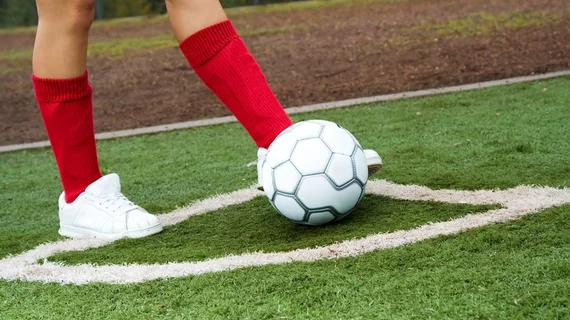4 key takeaways from a new report on sports-related concussions
The American Academy of Pediatrics (AAP) has updated its guidance on caring for children and adolescents with sports-related concussions (SRCs), publishing the latest version in the December issue of Pediatrics.
“While more families, physicians and coaches are aware of the health risks of a blow to the head—and more concussions are being reported—we remain concerned about players who try to tough it out without seeking help,” lead author Mark E. Halstead, MD, an associate professor at Washington University School of Medicine in St. Louis, Missouri, said in a prepared statement. “We know from surveys that many high school athletes will continue to play after a head injury out of fear they won’t be allowed back on the field.”
These are four key takeaways from the updated AAP guidance:
1. The APP changed its recommendations for returning to “physical and cognitive activity” in the days following a concussion
In the days following a concussion, the APP noted young athletes should return to some form of physical or cognitive activity.
“Athletes absolutely need to take an immediate break from play after a concussion, but we find that, during the recovery process, it is best to encourage a reasonable amount of activity, such as brisk walking,” Halstead said in the same statement.
The researchers said it is unnecessary for students to miss a “prolonged amount of time away from school,” though their families may need to work with teachers to lessen the workload as the student transitions back into day-to-day activities. Families will need to discuss these issues with their physicians on a case-by-case basis.
In addition, the APP noted there is “no research that shows that a youth’s use of electronics” after a concussion does an athlete any harm.
2. Rule changes and policy changes to help limit SRCs are recommended
“Although all concussions cannot be prevented, reducing the risk through rule changes, educational programs, equipment design, and cervical strengthening programs may be of benefit,” the guidance’s authors wrote. “Prevention efforts should be focused on reducing the risk of long-term injury after a concussion.”
3. Neuroimaging offers no quick fixes for treating these athletes
“Results of conventional neuroimaging are typically normal in SRC,” the authors wrote. CT and MRI “contribute little to concussion evaluation and management except when there is suspicious of a more severe intracranial injury or structural lesion.” However, according to the guidance, head CT use for concussions in the emergency department increased by 36 percent from 2006 to 2011.
“Concussion may be associated with a significant cervical spine injury, skull fracture, or any of the four types of intracranial hemorrhage (subdural, epidural, intracerebral, or subarachnoid),” the authors added. “Signs and symptoms that increase the index of suspicion for more serious intracranial injury include severe headache, seizures, focal neurologic deficits, loss of consciousness for over 30 seconds, significant mental status impairment, repeated emesis, significant irritability, and worsening symptoms. Normal neuroimaging in the acute phase of injury may not absolutely rule out a chronic subdural hematoma, nor does it help predict subsequent neurobehavioral dysfunction or recovery time.”
The guidance does make it clear that MRI is recommended over CT to detect cerebral contusion, petechial hemorrhage or white matter injury. MRI is also the modality of choice if neuroimaging is needed outside of the athlete’s initial “emergency period.”
4. The long-term effects of SRCs on these athletes is still unclear
Despite significant research into the topic, the authors noted that the impact of SRCs has not been “conclusively determined.”
“Prolonged exposure over many years to repetitive brain trauma has been associated with pathologic changes in the brain in collegiate and professional athletes but is notably less in younger athletes,” the authors wrote. “The exact correlation of clinical symptoms with pathologic findings has not yet been established.”

